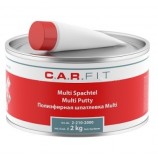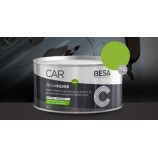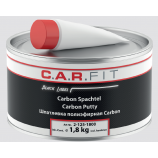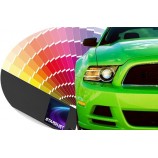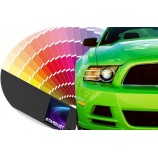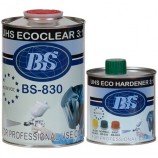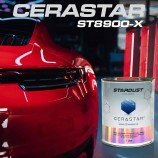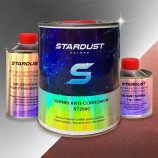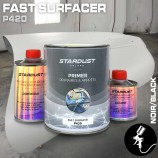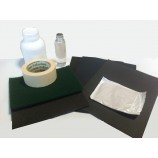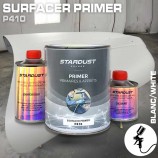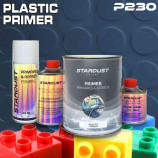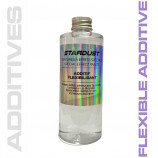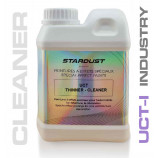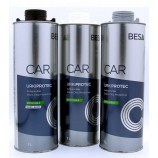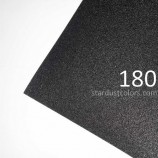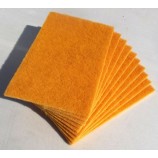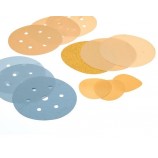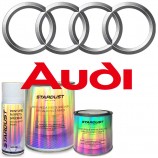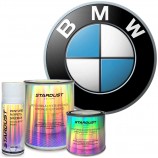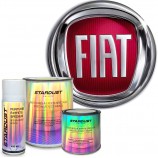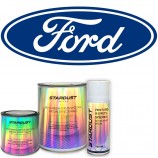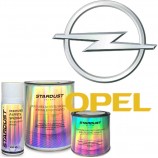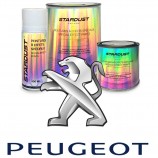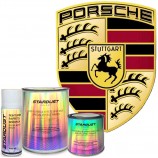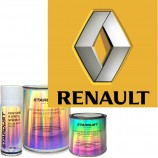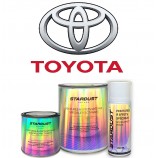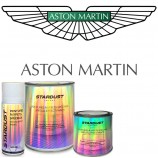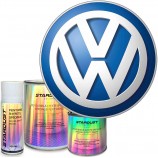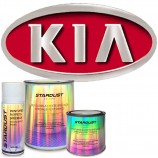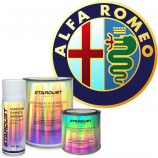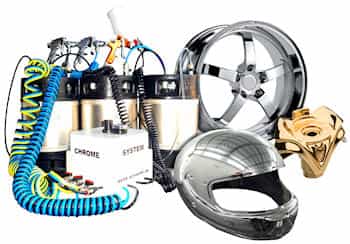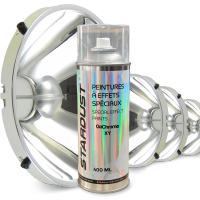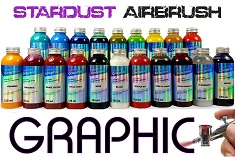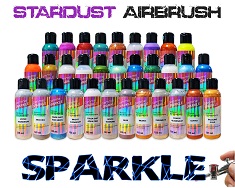All Products are in stock
and shipped from France.
Delivery within 48 hours.
and shipped from France.
Delivery within 48 hours.
Our categories
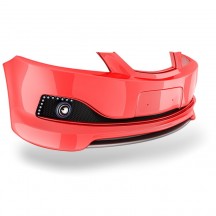
Plastic bumper paints
As every body shop knows, bumper painting is one of the most difficult application of car paint for car parts. There are three reasons why applying car paint for bumper is more complex than it seems : bumpers are plastic parts (paint has very little adhesion), they are flexible (car paint can crack or peel) and they are subject to a high level o...
Read more-
-
CarFit Carbon-based Putty
In Stock 21.60£Special carbon bi-component putty Delivered in a 1.8kg pot with hardener In stock, delivery within 24hrs -
7080UHS 2K PAINT FOR CAR BODYWORK - Car's colour tone
In Stock 32.40£Painting "Shiny Direct" Polyurethanecolor code and packaging of your choiceavailable in kits of:- 0.375ml kit- 0.875ml kit- 1.650ml kit- 8.5 L kit- 1 two-component aerosol 290ml- Batch of 3 two-component aerosols 290mlkits include paint + hardener + thinners -
UHS 830 CLEARCOAT 1L or 5L + HARDENER + THINNER
In Stock 50.30£BS830 ULTRA HIGH SOLID CLEARCOAT The kit includes topcoat, hardener and thinner Delivery in 48h -
Ceramic 2K car clearcoat Cerastar
In Stock 29.64£Ceramic clearcoat in pot or aerosol.4 versions : Ultra high strength CERAMIC NORMAL -S-N-FCERAMIC X (extra hard)Kits include varnish, hardener and thinner.Available in Aerosol 290ml. Avaibility: IN STOCK -
Anti-rust glossy topcoat for all metals ST2900
In Stock 54.60£Complete kit with topcoat, hardener and thinner Yield : 6-8 m² L of mixture In stock and delivered within 48 hours -
Automotive Bodywork Quick Primer in 2h – Light, medium or dark grey P420
In Stock 24.30£Professional Leveling Primer Surfacer all supports Kits available in 5 colors and 3 formats - 750ml Kit - 1.45L Kit - Spray 290mL -
-
BI-COMPONENT FILLER PRIMER P410
In Stock 24.30£Body surfacing primer complete kit with included:Two-component filling primer + hardener H400 + thinner -
PLASTIC PRIMER / MONO-COMPONENT ADHESION PROMOTER P230
In Stock 21.60£Paint for Plastic - All plastic adhesion primer A special liquid and transparent product to promote adhesion over various plastic surfaces.Product available. -
-
Universal Cleaning Thinner (solvent-based)
In Stock 9.72£The product is available in different packagings: 1L 5L -
ANTI-GRAVEL COATING URKI-PROTEC
In Stock 10.80£Packing 1L, in 3 different Colors : BLACK 9005 GREY 7470 WHITE 9110 Satin appearance Rubbery feel -
Waterproof Abrasive sheets 180 to 5000
In Stock 4.32£Abrasive sheets for paint and bodywork 8 different grit sizes in increasing order 180 320 800 1200 1500 2000 3000 5000 (number of particles per inch) Medley includes: 1x180 1x320 1x800 1x1200 1x1500 1x2000 1x3000 1x5000 -
Abrasive Sponges - 4 different types - Pack of 5 -
In Stock 5.32£Available in three grain size fineness: Green - normal Grey - thin Gold - Ultra thin Wet fine Delivered by: 5 pieces -
Self-gripping abrasive discs velcro grain sizes 80/180/320/500 x10/x50
In Stock 5.86£Choose the grain of the record with the drop-down menu 2 offers:- The Lot of 10 abrasive Records - Limps with 50 abrasive Records -
Audi car paint code - Car colour code in 1K solvent-based basecoat
In Stock 27.00£All original Audi coloursProfessional car paint (solvent base)In cans or aerosol sprays among these packagings- 400 ml aerosol spray paint- Set of 3 aerosol sprays- 250 ml- 500 ml- KIT 1L - KIT 2L Audi code to be provided when ordering -
BMW car paint code - Car colour code in 1K solvent-based basecoat
In Stock 27.00£BMW paint : all colour codes in solvent basein packaging : - 250 ml Ready to use- 500 ml Ready to use- KIT 1L : 0.5L colour + 0.5L thinner- KIT 2L : 1L colour + 1L thinner- KIT 10L : 5L colour + 5L thinner- 400 ml aerosol spray- Set of 3 aerosol sprays 400 ml48h delivery -
FIAT car paint code - Car colour code in 1K solvent-based basecoat
In Stock 27.00£Fiat paint – 1K basecoatin cans or aerosol spraysWith StardustColors, you can choose from a range of 250 ml to 10L cans or aerosol sprays, and benefit from 48 hour delivery. -
FORD car paint code - Car colour code in 1K solvent-based basecoat
In Stock 27.00£All original Ford coloursProfessional car paint (solvent base)In cans or in aerosol sprays among the following packaging : - 400 ml aerosol spray paint - Set of 3 aerosol sprays - 250 ml - 500 ml - KIT 1L - KIT 2L Ford code to be provided after order -
MERCEDES car paint code - Car colour code in 1K solvent-based basecoat
In Stock 27.00£Mercedes paint – 1K basecoat in 250 ml to 5L cans or aerosol sprays - 250 ml - 500 ml- KIT 1L : 0.5L pure + 0.5L thinner- KIT 2L : 1L pure + 1L thinner- KIT 10L : 5L pure + 5L thinner- 400 ml aerosol spray- 3 aerosol sprays 400 ml -
OPEL car paint code - Car colour code in 1K solvent-based basecoat
In Stock 27.00£Opel paint : All colours in cans or aerosol sprays 250 ml diluted 500 ml diluted KIT 1L : 0.5L pure + 0.5L thinner KIT 2L : 1L pure + 1L thinner Aerosol spray 400 ml Set of 3 aerosol sprays 400 ml -
PEUGEOT car paint code - Car colour code in 1K solvent-based basecoat
In Stock 27.00£PEUGEOT paint – 1K basecoat in 250 ml to 5L cans or 400 ml aerosol spray - 250 ml Ready to use- 500 ml Ready to use- KIT 1L : 0.5L tint + 0.5L thinner- KIT 2L : 1L tint + 1L thinner- KIT 10L: 5L tint + 5L thinner- 400 ml aerosol spray- Set of 3 aerosol sprays 400 ml DELIVERY 48h -
PORSCHE car paint code - Car colour code in 1K solvent-based basecoat
In Stock 27.00£PORSCHE 1K basecoat (two-coat paint) Choose your packaging from :- 250 ml Ready to use- 500 ml Ready to use- KIT 1L : 0.5L colour + 0.5L thinner- KIT 2L : 1L colour + 1L thinner- KIT 10L : 5L colour + 5L thinner- 400 ml aerosol spray- Set of 3 aerosol spays 400 ml -
RENAULT car paint code - Car colour code in 1K solvent-based basecoat
In Stock 27.00£Packaging to choose from :- 250 ml Pre-diluted- 500 ml Pre-diluted- KIT 1L : 0.5L pure + 0.5L diluent- KIT 2L : 1L pure + 1L thinner- KIT 10L : 5L pure + 5L thinner- 400 ml aerosol spray- Set of 3 aerosol sprays 400 ml Need advice ? Write to us at info@stardustcolors.com ! -
TOYOTA car paint code - Car colour code in 1K solvent-based basecoat
In Stock 27.00£All paint colours of Toyota vehicles of your choice : - 250 ml Ready to use - 500 ml Ready to use - KIT 1L: 0.5L colour + 0.5L thinner - KIT 2L: 1L colour + 1L thinner - KIT 10L: 5L colour + 5L thinner - 400 ml aerosol spray - Set of 3 aerosol sprays 400 ml -
ASTON MARTIN car paint code - Car colour code in 1K solvent-based basecoat
In Stock 27.00£Choose your ASTON MARTIN solvent-based car paint in spray or can1/ Select the format of your choice from the drop-down menu2/ Choose your delivery method at home or at a "relay point"3/ And send us your ASTON MARTIN color code by emailAvailable:Aerosol 400mlLot of 3 Aerosol250ml500mlSET 1L2L KIT -
VOLKSWAGEN car paint code - Car colour code in 1K solvent-based basecoat
In Stock 27.00£Here are our different formats for a Volkswagen car paint code : 400 ml aerosol spray Set of 3 aerosol sprays 400 ml 250 ml (can) 500 ml (can) KIT 1L (can) KIT 2L (can) Colour reference to be sent by email after ordering -
KIA car paint code - Car colour code in 1K solvent-based basecoat
In Stock 27.00£Order your KIA car paint code with 48 hour delivery Choose your packaging, then order. The colour code you want must be communicated to us after the order, by email - 400 ml aerosol spray - Set of 3 aerosol sprays - 250 ml - 500 ml - KIT 1L - KIT 2L -
Alfa Romeo car paint code - Car colour code in 1K solvent-based basecoat
In Stock 27.00£On this page order the ALFA ROMEO car paint codeAccording to the original factory paint in spray or potOffers with 48-72h deliveryAerosol 400 mlkit of 3 Aerosols 400ml250ml pre-diluted500ml pre-dilutedKIT 1L 0.5L pure + 0.5Ldiluent)KIT 2L (1L pure + 1L diluent)























